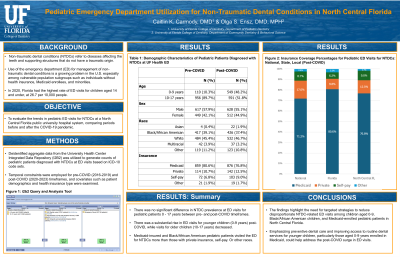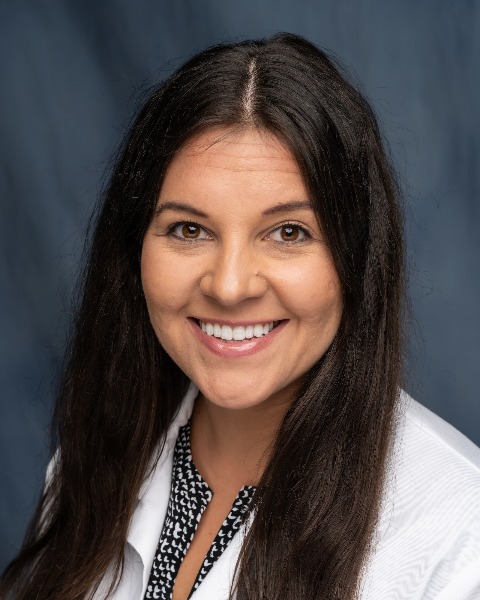Other
327 - Pediatric Emergency Department Utilization for Non-Traumatic Dental Conditions


Caitlin Carmody, DMD
Resident
University of Florida
University of Florida
Gainesville, Florida, United States- OE
Olga S. Ensz, DMD, MPH
University of Florida College of Dentistry
Gainesville, Florida, United States - OE
Olga S. Ensz, DMD, MPH
University of Florida College of Dentistry
Gainesville, Florida, United States - MC
Matthew Cooke, DDS, MD, MPH
Program director
University of Florida
Gainesville, Florida, United States
Presenting Author(s)
Co-Author(s)
Research Mentor(s)
Program Director(s)
Purpose: This study aims to evaluate trends in pediatric emergency department (ED) visits for non-traumatic dental conditions (NTDCs) at a North Central Florida public university hospital system, comparing periods before and after the COVID-19 pandemic.
Methods: Deidentified aggregate data from the University Health Center Integrated Data Repository (I2B2) was utilized to generate counts of pediatric patients diagnosed with NTDCs at ED visits based on ICD-10 code sets. Temporal constraints were employed for pre- and post-COVID timeframes, and covariates such as patient demographics and health insurance type were examined.
Results: There was no significant difference in the prevalence of NTDCs diagnosed at ED visits for pediatric patients ages 0 - 17 years between pre-COVID (2016 - 2019) and post-COVID (2020 - 2023) timeframes. A 340% increase in ED visits was observed for Medicaid-enrolled children aged 0 - 9 years post-COVID. A significantly higher number of pediatric patients with Medicaid insurance visited the ED for NTDCs compared to those with private insurance or self-pay, as well as patients who identified as Black/African American compared to other races.
Conclusions: The findings underscore the need for targeted strategies to reduce disproportionate NTDC-related ED visits among Black/African American children and Medicaid-enrolled pediatric patients in North Central Florida. Emphasizing preventive dental care and improving access to routine dental services for younger children, particularly those aged 0-9 years enrolled in Medicaid, could help address the post-COVID surge in ED visits. Collaborative efforts between healthcare providers and policymakers are essential to improve pediatric dental and overall health outcomes.
Identify Supporting Agency and Grant Number:

.jpg)